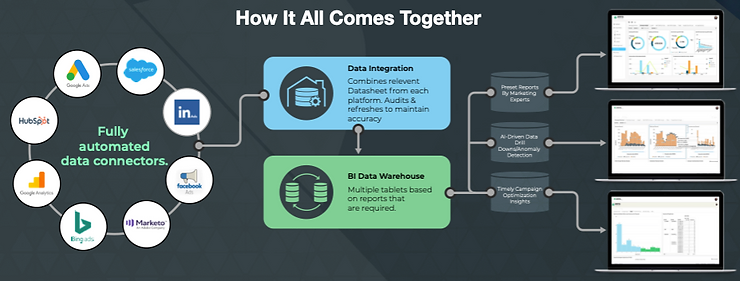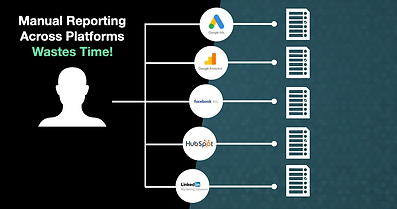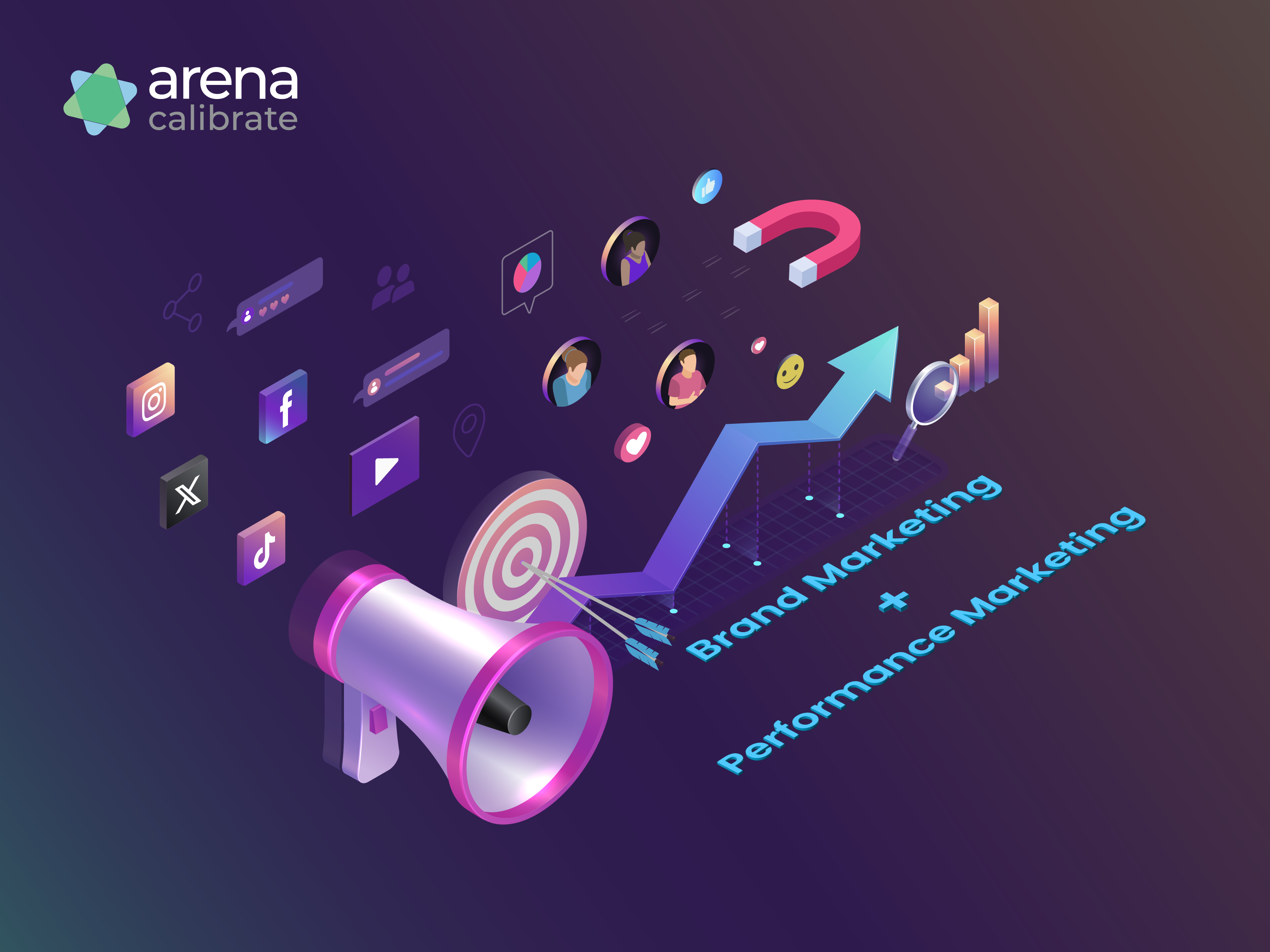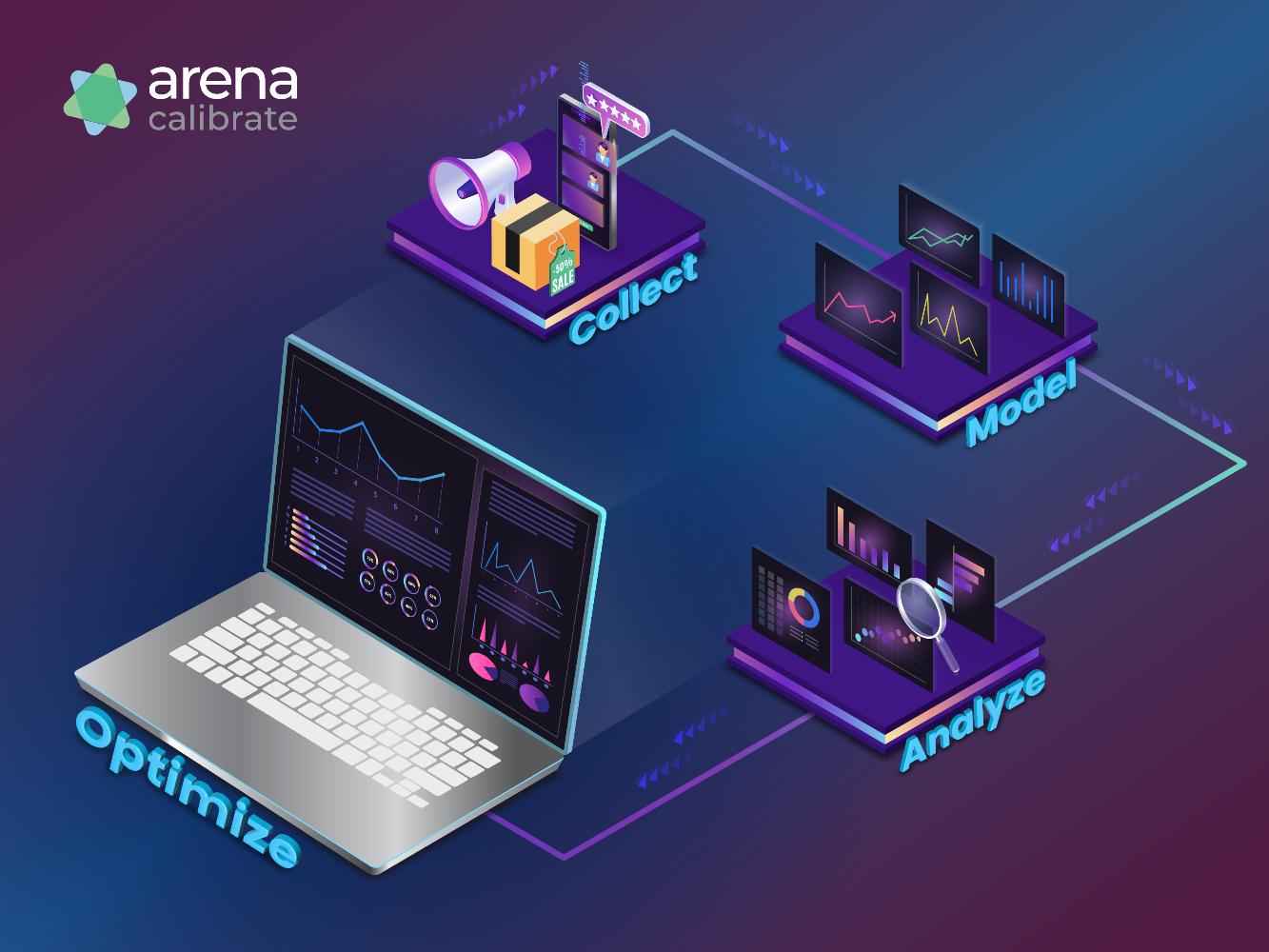As the digital age propels us forward to an exciting new era of business, one fact remains true - data is the skeleton key to growth. In today’s world, companies of all shapes and sizes are utilizing colossal amounts of data from different platforms to measure performance, seek new opportunities and ultimately discover what’s working and what isn’t.
The challenge, however, isn’t so much having access to the data as being able to gather it in one place for a holistic observation. Traffic, sessions, click-through rates, SEO rankings, bounce rates - marketers have all of these metrics at their fingertips. But the actual process of organizing this information together is more difficult.
Pulling different metrics across different datasets into actionable insights is one of the most disagreeable chores for marketing managers, yet it has to be done. The secret to overcoming this challenge lies within marketing data pipelines - a crucial component of business intelligence that can unlock exponential growth to firms of all sizes.
In this article, we’ll unpack exactly what marketing data pipelines are and why they’re an indispensable asset to your business.
What is a marketing data pipeline?
In its purest form, a marketing data pipeline is a series of data processing steps. It essentially ingests data from multiple different sources into a single target location for you to analyze and monitor your marketing performance.
This is an incredibly convenient asset to have when you consider all of the different places your business can have data stored in:

At the core of a marketing data pipeline’s functionality is the automated process of gathering and moving data from all of these platforms into one central place, and in a format that’s primed for reporting across all sources.
You may, for example, incorporate and examine data from your eCommerce platform with data from your retail sales, as well as your PPC and email marketing campaigns. Pulling this marketing information across different channels into one place provides you with a holistic and accurate perspective of how your business is performing, allowing your decision making to be completely data-driven.
How does a marketing data pipeline work?
Marketing data pipelines work in much the same way as physical pipelines. At one end there needs to be an input source (water well) and at the other an endpoint (i.e. your faucet).
Imagine each data source containing invaluable insights into your marketing performance but these are currently floating as loose disconnects. You want everything to be stored in one place for you to analyze.
Each one of your sources will be connected to the data pipeline through a database or special software application. Either one of these mechanisms will collect raw data from all of the different sources (such as APIs, cloud sources and social media) and push it through the pipeline.
As data travels through the pipeline it is blended, transformed and validated along with other data sources to maximize its quality, accuracy and security. The data is then pushed to the desired destination, which tends to be a data warehouse, for it to be stored and accessible for analysis.

What are the benefits of marketing data pipelines?
The manual process of importing and cleaning data is expensive. Apart from being incredibly time-consuming, this route to data collection is susceptible to error. Being human, whether we like to admit it or not, we’re all capable of a blunder.
If you give somebody the responsibility of manually transferring data from different sources, over a period of time they’ll inevitably make mistakes, creating a leaky pipeline. This lack of rigor allows data to spill through the gaps and feed marketers with distorted information that will undermine the accuracy of their final analysis. This is dangerous.
Operating with misreadings will steer your business further away from your goals and make it more destined for the rocks. For data to be an asset, it must be accurate and easy to collect efficiently.
A marketing data pipeline ticks all of these boxes by automating processes. This helps employees save time whilst ensuring that everything gathered is clean and formatted properly for reporting. Only then can a business bask in the riches of data-led decision making.
Let’s put this all into context with an example.
Say if you work in eCommerce, and your objective is to optimize your email marketing and PPC campaigns, you’ll need to collect data from a whole range of different sources to analyze, including:
- Your online store
- Google Ads
- Email marketing data from MailChimp
- Website metrics, including: traffic, behavior, returns etc
You could, of course, collect all of this data manually, then clean it, format it and make your own calculations to gather insights. But that would be redundant. Time is a limited commodity in business and it should be saved when possible

Now this is when you want to have a marketing data pipeline at your disposal, for it will liberate you from these tedious processes whilst ensuring the data collected is reliable. The benefits here are tenfold.
Instead of grappling with data manipulation, the data will be ready for you to place under the microscope, analyze from all angles and identify key growth opportunities that will propel your business forward.

Final thoughts
Quality data influences quality decision making. For businesses to compete in today’s fast paced environment, data must be just as accurate as it is accessible. A marketing data pipeline overcomes both challenges by automatically connecting all of your disparate data into one location, whilst formatting it in a way that’s optimized for making calculations across these different sources.
By contrast, manual data gathering takes the inefficient route that’s strewn with pitfalls. It’s time-consuming, it’s expensive and it’s susceptible to error. With this approach, a leaky pipeline is inevitable, feeding marketers with inaccurate data that will contaminate the decision-making process and ultimately steer them further away from achieving their goals.
Due to these drawbacks, a marketing data pipeline remains an indispensable asset to any business looking to achieve growth and will be the backbone of a company’s business intelligence and analytics.




